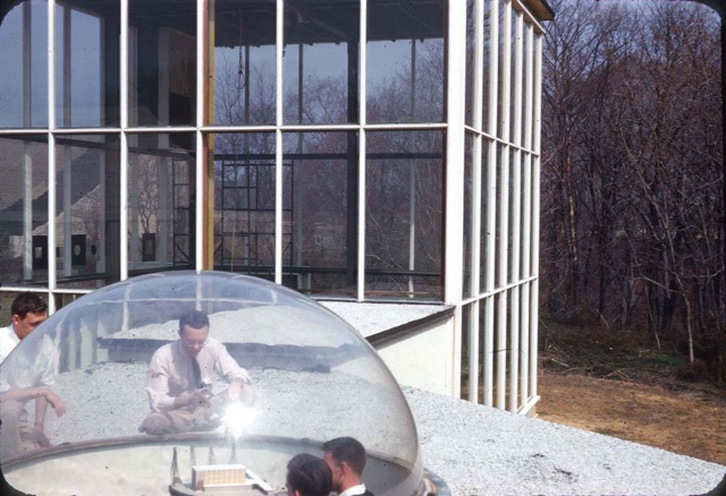|
Architects have long had an interest in the relationship of their design interventions to surrounding climatic conditions. Concerns over site, orientation to the sun, and the relationship of materials to heat and humidity are all embedded in vernacular design traditions, and have been essential to the provision of human shelter for centuries. With the emergence of modern architectural techniques beginning in the 19th century, the relationship of a building to its climate, and the figuration of this relationship, underwent significant transformation. Climatic Effects documents and analyzes the robust and dynamic discourse around climate that developed as part of architecture’s modernization, and became the focus of many practices and pedagogies in the 1950s. The post-war years saw extensive experimentation in how architectural practices could project buildings with a more precise relationship to their surrounding ecological conditions – in the efficiency of production, in the use of solar power, and, the primary subject of this project, in the alignment of the form, orientation, and materials of a building to its climate. As part of these new methods, forms of representation were developed that sought to clarify the possible social, material, and economic relationships that could result. It was through these images, as much as through the buildings that were constructed, that design methods encouraged new ideas about how to live. The drawings, diagrams, and photographs produced in this methodological discourse, quasi-technical in nature, led to novel parameters for how architecture could operate in the social milieu, and also encouraged design professionals to consider new criteria for their designs. Climatic Effects establishes that visual and technical strategies to consider relationships of architecture to climate not only had effects on the profession, they were also essential to a broader understanding of how economies and ecologies interact. The way in which we conceive of, imagine, and represent the relationship between humans and the environment was seen as central to the social patterns, material conditions, and professional processes that allow us to live comfortably within it. Architecture became an important discursive site through which discussions about the environment could take place. The images, concepts, and buildings developed out of these methodological discussions simultaneously allowed for productive engagements between architecture and adjacent fields, and also emphasized the importance of research to architectural innovation.
The architecture profession is currently undergoing a very interesting transformation. Many assumptions that have guided innovation in the field – in particular, the use of digital platforms for the production of novel form – are beginning to be questioned by practitioners, students, and scholars. An important goal of Climatic Effects is to begin to substantiate an alternative history for the field, one that is focused on careful attention to environmental patterns, and on architecture as a means to interrogate and adjust the place of the human within these patterns. The project is supported by the Graham Foundation, the Alexander von Humboldt Foundation, the Rachel Carson Center, and the Princeton Environmental Institute.
12 Comments
David Barber
6/17/2016 02:44:12 pm
Brilliant
Reply
10/27/2021 05:03:31 am
The architecture profession is currently undergoing a very interesting transformation. Many assumptions that have guided innovation in the field – in particular, the use of digital platforms for the production of novel form – are beginning to be questioned by practitioners, students, and scholars. An important goal of Climatic Effects is to begin to substantiate an alternative history for the field, one that is focused on careful attention to environmental patterns, and on architecture as a means to interrogate and adjust the place of the human within these patterns.
Reply
8/1/2022 03:44:26 am
XBD Collective is an award-winning design firm focused on materializing sophisticated design into inspired physical spaces . Motivated by the pureness of human experience, our team imagines architectural and interior designs meant to envelop inspire, and engage sensory experiences for <a href="https://xbdesign.com/">interior design and architecture agency in Dubai</a>. With presence in London & Dubai, XBD Collective is a recognised architecture and interior design agency positioned to provide a careful bespoke approach to ambitious projects worldwide <a href="https://xbdesign.com/">Architecture Firms in Dubai</a>
Reply
11/1/2022 08:55:51 pm
Most people, including me, agree with you, but those who don't should not be forgotten. We need to persuade them. For a better world! I want to overcome these difficulties by cooperating with you. Please come to my blog below and contact me. 먹튀검증
Reply
Leave a Reply. |
Archives
August 2021
Categories |


 RSS Feed
RSS Feed